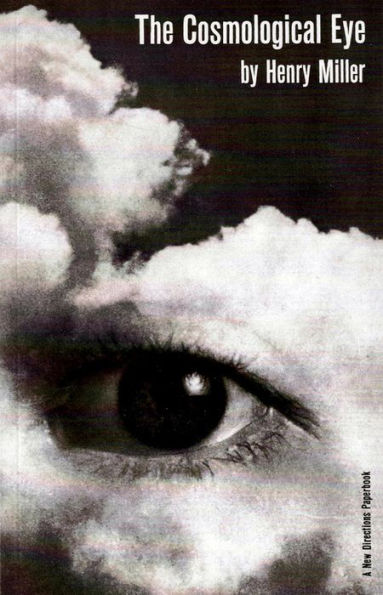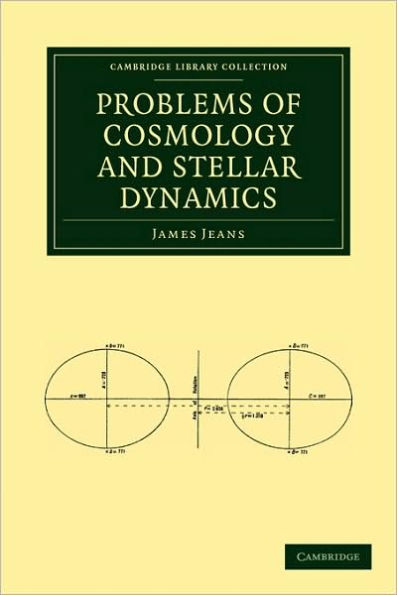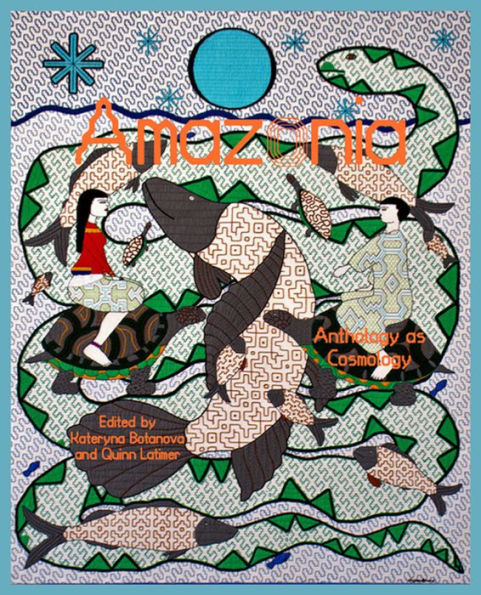Home
The Cosmological Eye
Barnes and Noble
Loading Inventory...
The Cosmological Eye
Current price: $22.95

Barnes and Noble
The Cosmological Eye
Current price: $22.95
Loading Inventory...
Size: Paperback
*Product information may vary - to confirm product availability, pricing, shipping and return information please contact Barnes and Noble
This collection, first published by New Directions in 1939, contains a number of Henry Miller's most important shorter prose writings.
They are taken from the Paris books
Black Spring
(1936) and
Max and the White Phagocytes
(1938) and were for the most part, written at about the satire time as
Tropic of Capricorn
—the period of Miller’s and Durrell’s life in the famous Villa Seurat in Paris. As is usual with Miller, these pieces cannot be tagged with the label of any given literary category. The unforgettable portrait of Max, the Paris drifter, and the probably-autobiographical
Tailor Shop
, are basically short stories, but even here the irrepressible vitality of Miller’s personality keeps breaking into the narrative. And in the critical and philosophical essays, the prose poems and surrealist fantasies, the travel sketches and scenarios, Miller’s passion for fiction, for telling the endless story of his extraordinary life, cannot be held down. Life, as no other modern author has lived it or can write it, bursts from these pages—the life of the mind and the body; of people, places and things; of ideas and the imagination.
They are taken from the Paris books
Black Spring
(1936) and
Max and the White Phagocytes
(1938) and were for the most part, written at about the satire time as
Tropic of Capricorn
—the period of Miller’s and Durrell’s life in the famous Villa Seurat in Paris. As is usual with Miller, these pieces cannot be tagged with the label of any given literary category. The unforgettable portrait of Max, the Paris drifter, and the probably-autobiographical
Tailor Shop
, are basically short stories, but even here the irrepressible vitality of Miller’s personality keeps breaking into the narrative. And in the critical and philosophical essays, the prose poems and surrealist fantasies, the travel sketches and scenarios, Miller’s passion for fiction, for telling the endless story of his extraordinary life, cannot be held down. Life, as no other modern author has lived it or can write it, bursts from these pages—the life of the mind and the body; of people, places and things; of ideas and the imagination.
This collection, first published by New Directions in 1939, contains a number of Henry Miller's most important shorter prose writings.
They are taken from the Paris books
Black Spring
(1936) and
Max and the White Phagocytes
(1938) and were for the most part, written at about the satire time as
Tropic of Capricorn
—the period of Miller’s and Durrell’s life in the famous Villa Seurat in Paris. As is usual with Miller, these pieces cannot be tagged with the label of any given literary category. The unforgettable portrait of Max, the Paris drifter, and the probably-autobiographical
Tailor Shop
, are basically short stories, but even here the irrepressible vitality of Miller’s personality keeps breaking into the narrative. And in the critical and philosophical essays, the prose poems and surrealist fantasies, the travel sketches and scenarios, Miller’s passion for fiction, for telling the endless story of his extraordinary life, cannot be held down. Life, as no other modern author has lived it or can write it, bursts from these pages—the life of the mind and the body; of people, places and things; of ideas and the imagination.
They are taken from the Paris books
Black Spring
(1936) and
Max and the White Phagocytes
(1938) and were for the most part, written at about the satire time as
Tropic of Capricorn
—the period of Miller’s and Durrell’s life in the famous Villa Seurat in Paris. As is usual with Miller, these pieces cannot be tagged with the label of any given literary category. The unforgettable portrait of Max, the Paris drifter, and the probably-autobiographical
Tailor Shop
, are basically short stories, but even here the irrepressible vitality of Miller’s personality keeps breaking into the narrative. And in the critical and philosophical essays, the prose poems and surrealist fantasies, the travel sketches and scenarios, Miller’s passion for fiction, for telling the endless story of his extraordinary life, cannot be held down. Life, as no other modern author has lived it or can write it, bursts from these pages—the life of the mind and the body; of people, places and things; of ideas and the imagination.






![If You Can Believe Your Eyes and Ears [Green Opaque Vinyl] [Barnes & Noble Exclusive]](https://prodimage.images-bn.com/pimages/0602465868241_p0_v1_s600x595.jpg)










